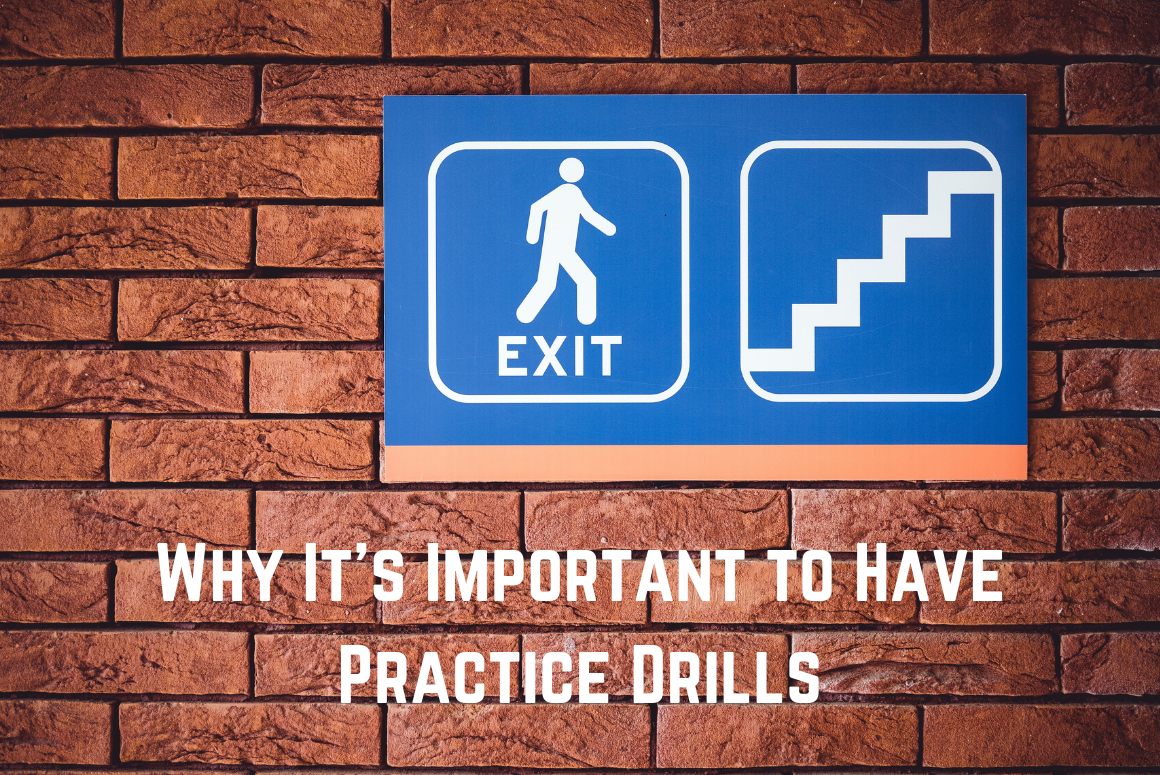“Tell me and I forget, teach me, and I may remember, involve me and I learn.”
~ Benjamin Franklin ~
As the saying goes “Practice makes perfect” and it applies to anything that we want to get better at; the same is true for emergency preparedness. Even though emergencies are unpredictable and unexpected, we should do our best to prepare as generally as possible. Then, when a real emergency happens, we can rely on our knowledge and training, and adjust according to the situation in front of us. The best way to practice for emergencies, is by running regular practice drills.
What is a practice drill?
According to the World Health Organization (WHO), “Drills are coordinated, supervised activities that are normally used to test a single specific operation or function; their role is to practise or perfect one small part of the response plan.”
Drills are usually relatively limited in scope, and focus on specific procedures, so they’re a great opportunity to practice and perfect an evacuation route, or a communication plan. Typically, these involve a small number of people, whether in the home (family) or in an organization (office workers), and use real or simulated equipment.
Practical Example: If you’re practicing your office evacuation, and you have specific staff dedicated to collecting your emergency kits, they’ll practice using existing kits (you won’t use the items within them until a real emergency).
What kind of drills are there?
There are nationwide events like The Great ShakeOut, which teaches everyone how to Drop, Cover, and Hold On in the event of an earthquake. This amazing organization educates its audience throughout the year, and holds its drill every October so that everyone can participate, no matter where they are.
The drills we’re all most likely to be involved with focus on the places we spend the most time, like school, the office, or even at home, and, as such, are also the places that we’re most likely to find ourselves in when an emergency occurs, whether it’s an earthquake, flood, or severe weather like a blizzard or windstorm. Some types of drills might include:
- Building evacuations, for emergencies like fires, collapses, or lockdowns
- Natural disasters, like earthquakes, tsunamis, wildfires, and severe storms
- Community evacuations (planned or unplanned), for road closures or flooding
There are other drills that certain organizations will train their employees in, based on the function they perform overall. For example, first responders may prepare for transportation accidents; forest management teams may prepare for wildfire scenarios, including controlled burns, evacuations, and response; and special groups may prepare for civil disturbances like bomb threats or protests.
Practical Example: When planning for home evacuations due to fire, professionals advise that you determine two ways out of every room (in case one is blocked). In a practice evacuation, you can test each of those ways out to ensure they get you to safety quickly and efficiently.
Why are practice drills important?
There’s lots to consider when it comes to emergency preparedness overall, and a practice drill gives you a chance to practice either parts, or all, of it. Here are some reasons why practice drills are so important, whether you do them personally, at work, or with your kids’ school:
- Simulating a real event is necessary to polish your disaster plans – by running hypothetical scenarios, you can test what works and what doesn’t, and adjust accordingly before you have to use things for real
- You can practice individual parts of your emergency plan and make sure they’re as polished as possible before you add them into the complete plan
- If you have specific equipment in your supplies, like emergency ladders or walkie-talkie radios, drills give you a chance to check they work, and make sure that everyone knows how to use them
- Practicing what to do in an emergency before one happens can help individuals (coworkers, teachers, students, family members) feel more confident in their ability to handle an emergency and can help reduce stress at the time too
- You have an opportunity to get feedback from other family members, coworkers, or faculty/students to improve (or even remove) areas of your plan or specific processes to suit your circumstances as accurately as possible
- Drills are part of your overall disaster or emergency preparedness efforts and bring your education and resources together
What are some of the emergency drills you’ve put together or participated in? Have you had to put them to use in a real emergency?
Terms and Conditions
All content provided on this blog is for informational purposes only. The owner of this blog makes no representations as to the accuracy or completeness of any information on this site or found by following any link on this site. The owner will not be liable for any errors or omissions in this information nor for the availability of this information. The owner will not be liable for any losses, injuries, or damages from the display or use of this information. This policy is subject to change at anytime.

